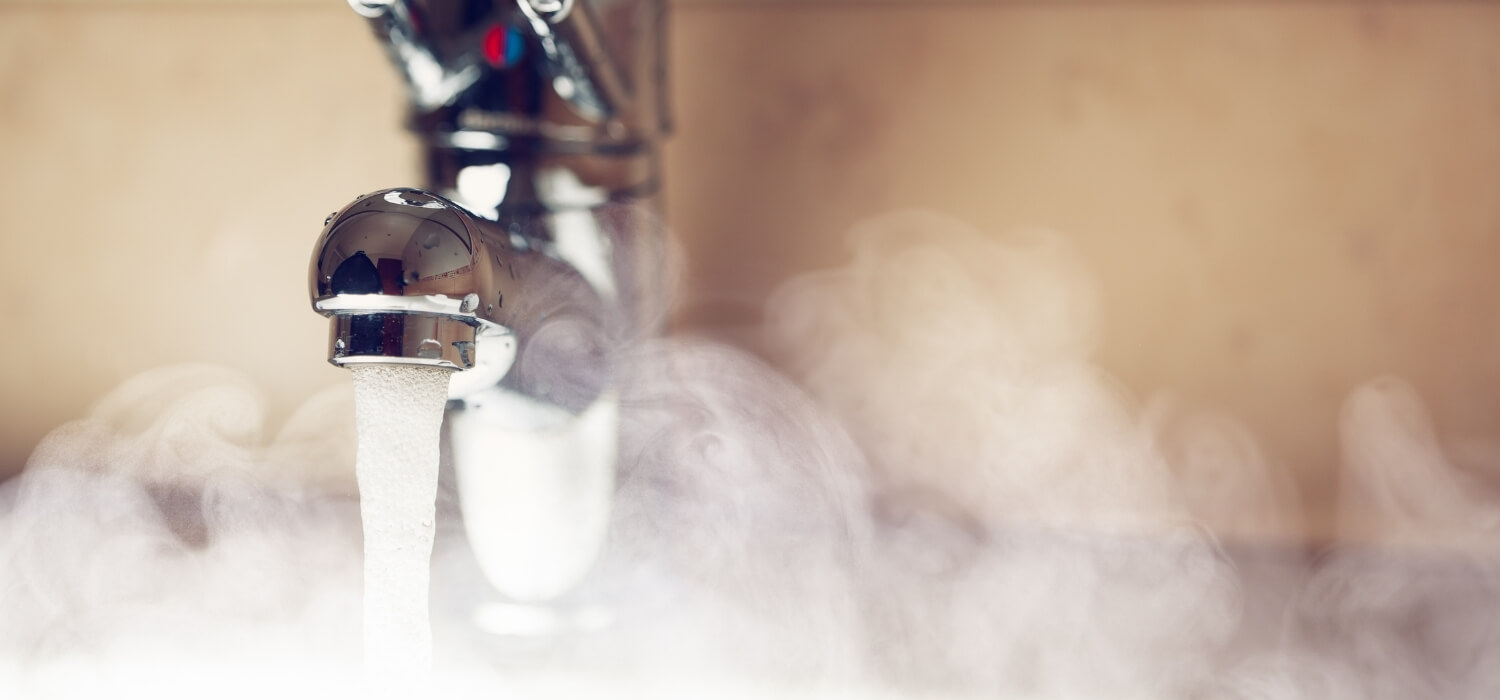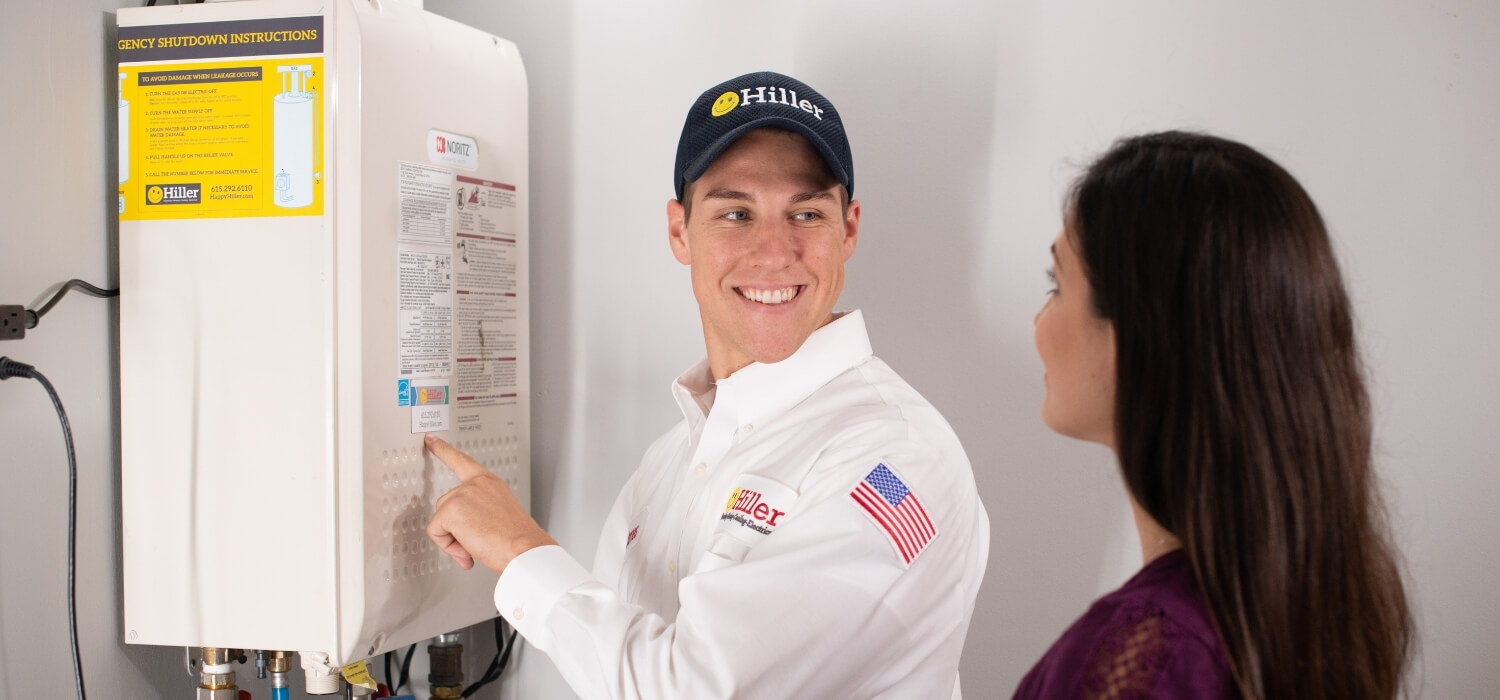Pros and Cons of a Tankless Water Heater
Enjoy reading the latest DIY articles and saving money?
Receive our latest helpful hints, tricks and savings, directly to your inbox.
Posted April 5, 2021
Did you know that a tankless water heater proves 24 to 34 percent more energy-efficient than traditional water heaters? Or, that they come with easily replaceable parts and can last for upwards of 20 years? Also known as demand or instant water heaters, the advantages don’t stop there. That said, it’s important to understand their limitations and disadvantages before investing in one.
For example, you’ll pay more for a tankless water heater. And they’re prone to inconsistent water temperatures with heavy usage.
How do you decide whether a tankless water heater is right for your home? Let’s take a look at the pros and cons of a tankless water heater so that you can make an informed decision.
Tankless Water Heater Costs

Tankless water heaters cost significantly more than their traditional alternatives, so you’ll need to think of your purchase as an investment in the future.
Your average tank-style model costs between $570 and $600. You can expect to pay between $600 and $800 in plumbing expenses to have it installed.
As for tankless units, they cost anywhere between $699 and $2,000 or more. And don’t expect installation to be a DIY cinch.
You need to hire a great local plumber to do the work. Why? Because these installations require a lot more than just a basic understanding of plumbing.
To have one installed, expect to pay anywhere from $1,506 to $3,938.
Of course, these figures vary depending on your geographic location and the type of tankless heater that you install.
Installation Expenses
But why the steep price for a tankless installation? Because these units have unique requirements, which can lead to costly upgrades.
For example, an installer may need to increase the diameter of the pipe running from your gas meter to the water heater.
You may also need to have the electrical service to your house upgraded to 200 amps or more.
That said, it generally costs more to install a gas tankless water heater than an electric one. That’s because an electric tankless water heater negates the need for labor-intensive alterations such as rerouting gas lines.
Savings Associated with a Tankless Water Heater

When you add up all of these costs, do the nominal monthly savings associated with a tankless water heater prove worth it?
Yes, but you’ll have to be patient. On average, expect to save between $75 and $100 per year as a result of their energy efficiency.
That equates to between six and 12 years before you’ll see a return on your investment. But this figure varies by the model, hours of operation, efficiency level, and more.
Fortunately, tankless units give you plenty of time to recoup your losses.
Traditional water heaters only last about 10 years. But you can expect to see a minimum of 20 years of service with a tankless model, as long as you don’t slack when it comes to routine maintenance. (More on that later.)
Instant water heaters also come with longer warranties. Some run up to 20 years, which provides plenty of added protection for homeowners.
Besides the savings associated with energy efficiency and double the longevity, if you stay proactive and do your research, you could see savings in other ways.
For example, you may be able to take advantage of a tax credit associated with installing energy star products. Through the Bipartisan Budget Act of 2018, this tax credit is available until 2021.
Additional Maintenance May Prove Necessary
Alright, let’s get back to the routine maintenance I mentioned above.
While a longer warranty will give you peace of mind, most require annual maintenance. Many also stipulate that you install a water softener. These practices will ensure the longevity of your heater.
You should also plan on flushing out the system at least once a year. This will help you avoid a mineral buildup in the water line or heater, which could impact the performance.
Inconsistent Water Temperatures

Inconsistent water temperature issues arise when a high volume of water gets utilized in the house at the same time.
While demand water heaters can simultaneously warm a few gallons of water, they have trouble when multiple appliances run together.
Why? Because instant tankless water heaters each have a maximum flow rate. This means they’re only able to heat a specific amount of water at any given time.
If you’re a huge fan of running many hot-water-guzzling appliances at the same time, then a tankless unit may not prove right for you. That said, tank-style heaters run out of water, too.
You may also notice that water fails to heat up when the faucet is only partially turned on. This is remedied by opening the faucet all the way. While not great from a water conservation standpoint, this proves an easy, cheap solution.
What’s the final verdict? Tankless water heaters will never run out of water as long as you remember to take showers consecutively and stagger when you use appliances such as dishwashers and washing machines.
Shop for the Right Flow Metric
To help with inconsistent temperatures, pay close attention to the flow rate. This refers to the amount of water that a tankless unit can heat. Flow rate gets measured in gallons per minute (GPM).
GPM will help you determine the size of the demand water heater that you need. Here are some basic flow rates for common appliances:
- Bathtub: 4 GPM
- Shower: 2.5 to 3 GPM
- Bathroom faucet: 0.5 to 1.5 GPM
- Kitchen Faucet: 1.5 GPM
- Dishwasher: 1 to 1.5 GPM
- Washing machine: 1.5 to 3 GPM
Start by determining how much water your household needs to run. Then, purchase a unit that suits your usage.
As a rule of thumb, the higher the GPM, the more water the unit will heat at a time. Fortunately, demand water heaters come in a wide variety of sizes. You can even find specific models designed to handle lots of residential water use.
The Cold Water Sandwich

Besides inconsistent water temperatures due to an overtaxed system, some homeowners report what’s called a “cold water sandwich.” This occurs with intermittent use like when you’re turning the water on and off while washing dishes.
You’ll experience a surge of hot water followed by a sporadic burst of cold water and then more hot water. What causes this?
When you’re turning the faucet on and off numerous times during a chore or activity, you end up with hot water sitting in the pipes from moments before.
This hot water gets followed by a burst of cold water before the heater catches back up. Then, you’ll go back to hot water.
Most consumers don’t find this to be a big problem. That is unless they’re not used to it. It can prove disconcerting the first time or two that it occurs.
Two More Quirks of Tankless Water Heaters
Another disadvantage of instant water heaters is that they have trouble achieving a lukewarm temperature. That’s because there’s a gap between the coolest warm water that you can create and completely cold water.
Most consumers don’t see this as a major issue. But if you’re a fan of coolish baths or showers, then a tankless system may not be your best bet.
Another quirk with demand systems has to do with power outages. Whether you opt for a gas or electric water heater, you won’t be able to get hot water during a power outage.
Why? Because both types rely on an electric control panel to operate.
If you live in an area prone to blackouts, particularly extended ones, a tank-style heater proves the better bet. The water stored in the tank can stay hot for several days, so you can enjoy a nice hot shower even if it’s by candlelight.
Wave Bye-Bye to Standby Loss

With a tankless water heater, you don’t have to worry about standby loss. But with traditional water heaters, to keep water hot and ready, it gets heated, sits dormant and cools, and then gets reheated again.
This process, especially if you’re away from home for a while, goes on and on until you use it.
This process also happens when you’re away from home. So, you end up paying to heat water repeatedly. Your energy costs go up with each reheat, which spells clear inefficiencies.
Take Control of Your Equipment Space (Maybe)
Homeowners will also appreciate how much less room tankless water heaters take up compared to their traditional alternatives. They often prove ideal for many small homes with modest hot water demands.
When it comes to traditional water heaters, average 40 to 50-gallon units measure anywhere from 54 to 60 inches tall. Their cylindrical shape also eats up space coming in at an average diameter of 20 inches.
Tankless heaters measure just 27 inches tall and 18 inches wide. They’re typically about 10 inches deep and can easily be mounted on a wall like a circuit breaker. In other words, you can easily stash one in most closets.
Now, how’s that for space savings? As you can imagine, they prove particularly attractive for those with smaller homes.
Unfortunately, installing a tankless unit often requires additional equipment, namely a water softener.
This entails more upfront expense. And it also negates some of your space savings.
You’ll have to make room for the necessary bags of salt for the softener. When it’s all said and done, the entire setup could devour more space than a traditional heater if you’re not careful.
Decrease Your Risk for a Major Flooding Incident

What’s one of the biggest risks facing homeowners when it comes to traditional water heaters? The potential for flooding.
After a few years of use, minerals from hard water can build-up within the tank. This buildup can lead to corrosion and potentially massive leaks because of the tank’s ability to hold upwards of 40 to 50 gallons at a time.
Because demand heaters are tankless, they prove far less likely to leak. And if you do get a leak? It’ll most likely prove minor compared to the catastrophic damage associated with a tank-style water heater’s flood potential.
Mitigate the Threat of a Tank Explosion
Another concern you won’t have to worry about with a demand water heater is a tank explosion threat.
In all fairness, such disasters prove rarer these days because of the plumbing code. The code requires that all tank-style heaters have both pressure and temperature relief valve that reduces tank pressure to eliminate the risk of an explosion.
Nonetheless, sediment and mineral buildup in the tank can clog the relief valve preventing it from working properly. This scenario can lead to a massive buildup of pressure that puts your home and family’s safety at risk.
Experts recommend testing your tank-style heater’s pressure and temperature valve annually to avoid this risk.
Of course, only a tankless water heater can reduce this risk to zero.
Decrease the Possibility of Exposure to Toxic Metals and Burns
When it comes to the issue of safety, the distinct benefits associated with tankless water heaters continue. They allow for great precision with temperature control. So, you’ll prove less likely to get burned by what comes out of the faucet.
This is a particularly important feature for parents of small children.
You don’t have to worry about the impact of water sitting in a tank for extended periods, either. After all, tanks break down and deteriorate over time. Naturally occurring corrosion can lead to harmful toxins in your water.
Tankless water heaters assure that the water flowing over you and your family’s skin is fresh and toxin-free.
What’s Right for Your Home?

As you can see, a tankless water heater has plenty of benefits. It offers peace of mind when it comes to the threat of flooding or a tank explosion. And it also lessens your risk of a burn or exposure to toxic metals.
Demand water heaters also save money and prove compact. But you’ll have to weigh these savings against expenses and space loss due to additional equipment and necessities (e.g. a water softener and bags of salt).
Like any other appliance, they come with some quirks that may not prove palatable for all homeowners. These include a lengthy return on your investment, the possibility of inconsistent temperatures, and usage issues during power outages.
Looking for more water-related upgrades for your home? Read on to learn about the benefits of a water filter system.
 Daily Promotion
Daily Promotion
0% Interest for 12 Months on Select New Tankless Water Heater
Purchase Select New Tankless Water Heater & Receive 0% Interest for 12 Months. Click below to see financing terms.
Get Promotion